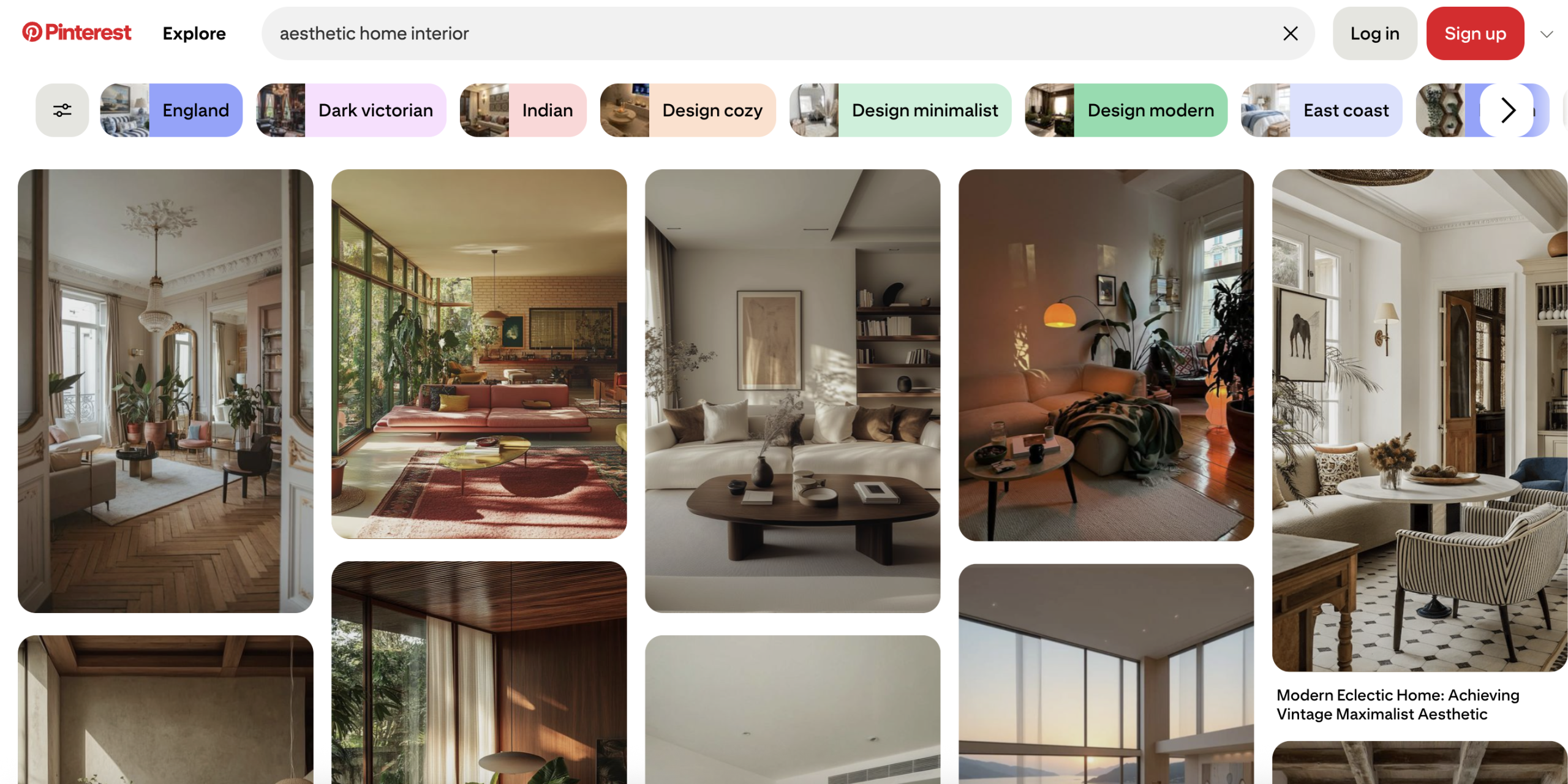The way UK consumers shop for home and interiors products is evolving at a rapid pace. Advancements are being driven by smarter tech, evolving consumer values and the continuing blend of digital and physical experiences. So, for ecommerce-led retail brands, staying ahead of the curve is essential for survival.
Here’s my take on the five biggest ecommerce trends in 2025 that UK home and interiors brands need to adopt if they want to stay at the top of consumer shopping lists.
1. Social Commerce and Influencers to be a Driving Force
Hands up if you remember the excitement of the Next Directory landing on your doorstep? I religiously poured through the home section of this brick-like glossy catalogue looking for interior’s inspiration for my first house.
Those days are long gone. Now, my interiors inspo comes from a steady stream of Instagram reels featuring influencer home tours, #reno updates and carefully curated Pinterest boards.
We’re all guilty of spending a little too much time scrolling through social these days. #interiorsinspo is alive and thriving, but now it’s highly shoppable. This year, I’ve noticed a marked shift of more brands embracing TikTok Shop and Instagram Checkout to tap into our impulse to purchase something we’ve spotted in a favourite influencer’s home. These platforms have become essential tools in the D2C marketer’s kit.
Micro-influencers are shaping consumers tastes in powerful ways. Room makeovers and styling tips are directly linked to products, meaning customers are only a swipe away from purchasing the exact same throw or sofa as their favourite creator. In response, brands are investing heavily in user-generated content, affiliate marketing and shop-the-look integrations to encourage followers to fall in love with their products, and ultimately, buy.
Social commerce is no longer the ‘nice to have’, it’s fast becoming the place where GenZ and millennials are making their purchases. Simply showcasing a product on social media is no longer enough; brands need to tell a story, spark emotion and make it instantly shoppable via the platforms their audiences call home.
2. Seamless Omnichannel Experiences Drive Customer Loyalty
Online sales of home and interiors products boomed during the pandemic, but bricks and mortar stores haven’t disappeared, they’ve evolved.
Today’s consumers are time poor, and they expect seamless retail experiences that span social, apps, online and in-store to make their lives easier. A typical shopper might browse for a sofa on social media or a brand’s website, go instore on a weekend for the all-important ‘sit test’, before going home to measure up and order online later the same day. Shoppers now expect flexibility across the entire purchasing journey.
To stay one step ahead, brands need to invest in a frictionless omnichannel experience. In 2025, this is more than just convenience. It’s a blend of unified stock visibility, click and collect, QR-coded product tags, virtual consultations and instore tech such as interactive digital screens.
To see the greatest gains, retailers must view physical stores and digital channels as complementary rather than competing parts of the same journey. Long-term success hinges on continually evolving and investing in omnichannel initiatives to meet customers wherever they are.
3. Sustainable Commerce Isn’t an Advantage Point. It’s expected.
For many consumers, sustainability is now the deciding factor. It’s no longer enough for a product to simply look good and fit the budget. It now must do good too.
As a bare minimum, brands must be more transparent about their green credentials, making information easy to find throughout the customer journey. On ecommerce channels, retailers are ‘eco-tagging’ products with statements like ‘reclaimed wood’, ‘vegan materials’ and ‘zero plastic packaging’ to highlight their commitment. Initiatives such as planting a tree for every order over a certain value are becoming more commonplace as brands work to reduce the environmental impact of delivery.
To truly stay one step ahead of the curve, retailers that develop robust environmental, social and governance (ESG) strategies will win the race long-term. That means using traceable, renewable materials that don’t harm the planet, treating their people and suppliers fairly, and giving back local communities. Businesses are increasingly expected to report the impact of their actions annually, holding them fully accountable.
Home brands making good progress in this area include The White Company, which achieved B-Corp status in 2024. Ikea also has many sustainable initiatives including offering ‘buy-back’ on old furniture to recycle materials into new products and reducing the amount that ends up in landfill.

4. Consumer Wellbeing is at the Heart of NPD
The link between our home and our mental wellbeing has taken on new significance in the five years since the pandemic. More than ever, people are seeking sanctuary from the stresses of modern life, which is being reflected in the latest interior trends.
Nature-inspired design continues to thrive, with earthy tones, natural materials and indoor plants are all seeing continued popularity. The Danish concept of “hygge” and the Japanese philosophy of “wabi-sabi” have influenced a more mindful and restorative approach to home styling.
Brands are responding with wellness-focused collections, sensory-enhancing products, and innovations designed to boost sleep quality or eases anxiety. A great example is the Calm Kettle launched earlier this year by Russell Hobbs. It features gentle colour changing illumination and soothing sounds while it boils to bring users a ‘moment of me-time’ while making their cuppa.
5. Hyper personalisation and AI-driven experiences
Personalisation in ecommerce is nothing new, but it’s evolved rapidly in recent years. Retailers can no longer reply on product suggestions based purely on browsing history or past purchases alone. Forward-thinking home brands like Ikea are using AI to create full-room mood boards and curate product bundles that feel tailored to each customer’s tastes and needs.
Brands are increasingly leveraging AI and machine learning to recommend products tailored to individual preferences. Tools like virtual room planners and augmented reality apps are helping customers make more confident, customised decisions online, particularly for big ticket items.
Many brands are also moving beyond basic CRM data, incorporating lifestyle cues and design preferences to create richer, more engaging customer journeys that delight and engage customers.
AI is also being widely used behind the scenes in ecommerce too. Around 80% of all Marks and Spencer’s product information is now generated through automation, though human oversight is still needed for quality control.
Ready to futureproof your ecommerce strategy?
At Ponderosa, we help home and interiors brands harness the latest digital trends, from social commerce to hyper-personalised AI experiences, to create seamless, impactful customer journeys that drive growth.
If you’d like to explore how your brand can stay ahead of the curve and make the most of these trends, we’d love to chat.
Get in touch to see how we can help turn insight into action.




